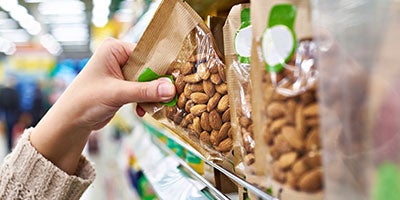A clearer picture is developing as the world and the packaging industry begin to emerge from the shadow of the COVID-19 pandemic.
After a sharp reduction in the number of new stock-keeping unit (SKU) introductions during the depths of the pandemic, a reversal of the trend seems to be in the offing as brand owners experiment with SKU expansion. But it is important not to misread or overinterpret this development — it does not necessarily indicate a full-scale return to pre-pandemic SKU proliferation. Instead, it reflects a willingness on the part of brand owners to experiment with an expansion trajectory as the economy rights itself, tempered by concerns about near-term macroeconomic trends.
On the other hand, the pandemic-era focus on private label shows signs of continuing — spelling opportunity for converters able to take advantage.
The state of supplier relationships is in flux, with some brand owners expanding their ranks of converters while others consolidate. Overall, there has been a modest net expansion of supplier relationships — a positive development.
In all, while signs are encouraging, the packaging industry finds itself in complex circumstances that do not easily translate into a simplistic “new normal.” What we can say with confidence is that brand owners are beginning to invest consistent with prior trends and that new pockets of opportunity are emerging. With longer-term trends not yet clear, and with a stressful, volatile macroeconomic environment continuing to impact sourcing strategies and production costs, brand owners and converters alike will have to keep close watch on developments within their own business ecosystems and tailor their strategies to their specific circumstances and capabilities.
The state of the industry — and how best to shape near-term strategies — is the focus of L.E.K. Consulting’s fifth annual brand owner packaging study. As in past years, the study reflects the responses of leaders in the brand owner community — including those engaged in marketing, brand management, procurement and package engineering. Its goal is to shed light on their packaging needs and capture their views on the most important trends that are driving demand.
This year’s study provides insight into the ways in which brand owners are trying to solve for supply chain disruptions that have been omnipresent since the pandemic began — in contrast to last year’s study, which examined how they were managing through the chaos. A year later, brand owners and converters alike have more ability to look back retrospectively at what worked and what did not — a perspective reflected in the results — and to anticipate the industry’s near-term direction.
About the study
The 2022 L.E.K. Consulting Brand Owner Packaging Study — our fifth annual proprietary exploration of packaging industry trends — is based on a survey of 421 brand managers and packaging stakeholders at brand owners.
As in past years, we looked specifically at brand trends and their impact on packaging demand, SKU trends, changes to packaging materials, implementation of sustainable packaging initiatives, and the implications of ecommerce on packaging.
But with an eye toward the extraordinary stresses of the past three years and a challenging current macroeconomic environment, we also looked at how perspectives may have shifted and how the macroeconomic environment has impacted companies’ packaging sourcing strategies and costs.
The leaders we surveyed are:
- Responsible for or directly involved in making packaging decisions for consumer brands
- Responsible for a consumer brand that is sold in the U.S. but that may also be sold in international markets
- Responsible for a brand within the following end-market categories:
- Food and beverage
- Beauty and personal care
- Healthcare
- Pet food
- Consumer electronics
- Cannabis
The survey was conducted during September and October 2022.
The big questions for 2022
As in past years, we set out to explore industry trends in five main dimensions:
-
The impact of brand performance and SKU dynamics on packaging. How has the total number of sub-brands and SKUs evolved for brand owners, and how do they expect it to change over the next year? How many new SKUs have they introduced each year, and how many do they expect to introduce next year? What number of SKUs are brand owners refreshing or retiring? What percentage of a brand’s primary volume sales is attributed to the top SKU?
-
Packaging trends and associated spend. How important do brand owners think packaging is to the success of the primary brand? How has the spend on packaging changed over time? What materials are they using in their primary packaging and how is that changing?
-
Megatrends’ impact on packaging — in particular, sustainability and ecommerce. How do brand owners define sustainable packaging? What percentage have a 2025 sustainability goal and what progress have they made? How do they expect their usage of sustainable materials to trend over the next few years? How is their use of ecommerce trending? To what extent are they developing packaging formats and features specific to ecommerce?
-
Brand owner packaging sourcing strategies. In the aftermath of the pandemic, have supply chain challenges persisted? Where are brands sourcing their packaging materials, and have sourcing strategies changed?
-
The impact of inflation. How are inflationary pressures influencing spending? To what extent are decisions to increase the packaging spend a response to inflation rather than a sign of increased investment?
These questions point to our overarching considerations. Here is what we learned.
2022 in overview
2022 was clearly a post-pandemic year for the packaging industry.
That is not to suggest that the year produced dramatic changes or that there has been a return to a pre-pandemic normal. Rather, the gradual reappearance of certain pre-pandemic tendencies — most notably a willingness on the part of brand owners to begin expanding the number of SKUs — suggests that brand owners believe they are operating in a more stable and predictable environment.
A return to stability and predictability, if it continues, does not necessarily imply that the industry will ever revert to its pre-pandemic state. Indeed, certain pandemic-era trends show signs of carrying over, for example, the increased market power of private label, which emerged during the pandemic and continued to exert influence this year.
Pandemic-era sourcing strategies also demonstrate staying power. The supply chain disruptions of 2020-2021 seem to have left a lasting impression. But brand owners are not aligned on how best to respond. While there is an overall shift to U.S.-sourced packaging, some brand owners are acting to diversify their supply while others are consolidating. Both approaches can translate into opportunity for converters, depending on their capabilities and their approach. The net trend is toward expansion and an increase in the number of supplier relationships.
Major trends and findings
SKU proliferation makes a comeback — or does it?
During the several years before the pandemic, SKU proliferation was a major focus for the industry as brand owners sought more shelf space and market share by expanding and extending product lines.
The pandemic, by effectively shutting down retail for an extended period and simultaneously disrupting grocery supply chains and consumer buying patterns, brought the SKU proliferation dynamic to a halt. Brand owners shifted focus to their highest-performing and most-profitable product lines. Facing the difficulty of getting product onto the shelves at all, brand owners prioritized the highest-volume and highest-margin SKUs while simultaneously investing less in new product introductions.
In 2022, SKU expansion got underway again, but not in the same way or at the same pace as before.
According to the study, brand owner sentiment implies an increase in the number of SKUs. The proportion of SKUs that brand owners intend to introduce, update and refresh is expected to gradually rise through 2023 (see Figure 1).













